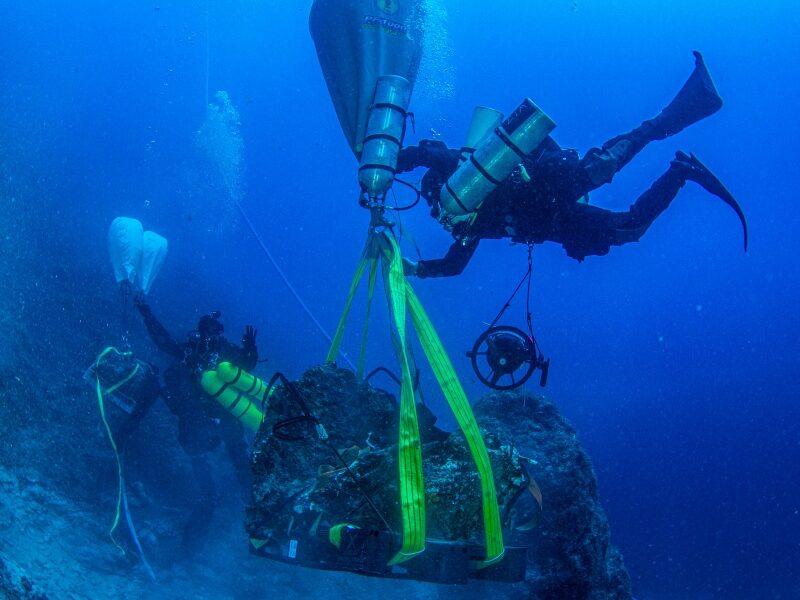Two human teeth embedded in a compact mass with copper traces were found during the May 23-June 15 underwater excavation of the Antikythera island shipwreck that dates to around 60 BC, the Greek Ministry of Culture & Sports said on Sunday.
Another finding during this marine excavation season was a greater-than-lifesize marble head of a man with a beard, which is identified as the Farnese type of Hercules, and could provide a fit with the headless statue no. 5742 at the National Archaeological Museum that was found by sponge divers in 1900.
The season is part of a five-year (2021-2025) excavation program at the well-known shipwreck that has yielded among other things the Antikythera Mechanism - an ancient calculation system - and several bronze and marble statues including the Antikythera youth, an iconic exhibit of the National Museum.
This year's findings were discovered after massive rocks weighing several tons were lifted out of the sea and exposed parts of the shipwreck not visible to date. Other findings also included a lot of objects from the ship's equipment, including copper and iron nails, and shapeless metal agglomerations covered by a crust of frozen water. All findings have been transferred to the Ephorate of Underwater Archaeology for conservation.
Work took place with the help of a new system to remove the rocks by the Hublot Xplorations group, of the Swiss clocks company, and by the Swiss Archaeological School under the supervision of Greek and foreign archaeologists in collaboration with several Ephorates and archaeologists (including marine archaeologists), university professors from Greece and abroad (especially Switzerland and Italy), and the Port Authority/Hellenic Coast Guard divers among others.
Funding and equipment was provided by Hublot, the Athanasios Lascarides Foundation (which also provided the special diving ship "Typhoon"), the University of Geneva, the Switzerland-based Nereus Research foundation, and Cosmote as communications sponsor.
The ministry particularly thanked Panos Lascarides and Kythera Mayor Efstrations Harlahakis for their continuing support of archaeological works, as well as the residents of Kythera and Antikythera islands.
The Antikythera shipwreck, the richest ancient wreck ever discovered, according to the site dedicated to the project (http://antikythera.org.gr/), was discovered by Greek sponge divers in 1900. Following salvage operations by the Greek Navy that pulled out statues and the Mechanism, dives by underwater explorer Jacques-Yves Cousteau with the approval of the Greek government in 1976 and under the supervision of Greek archaeologist Dr. Lazaros Kolonas (who had dived only for three days in 1953), systematic excavations began at 2012.

